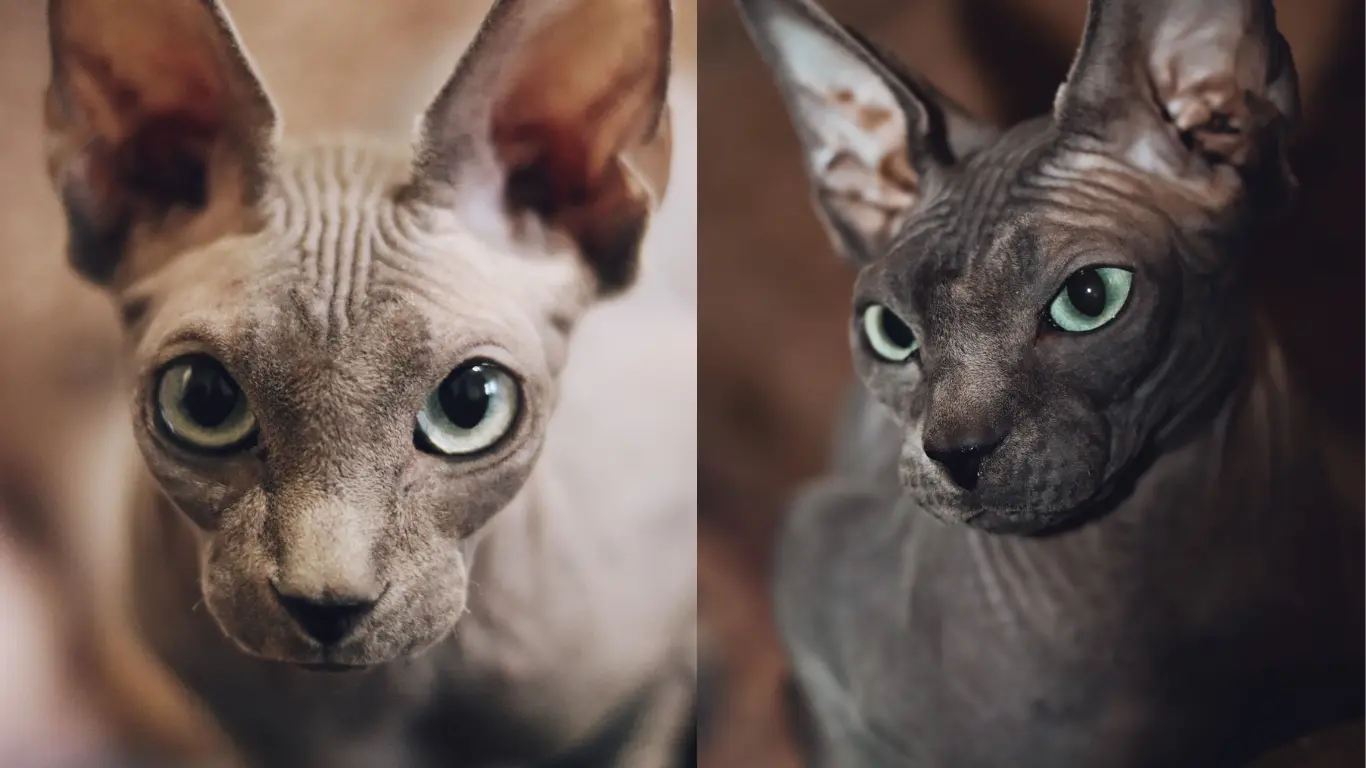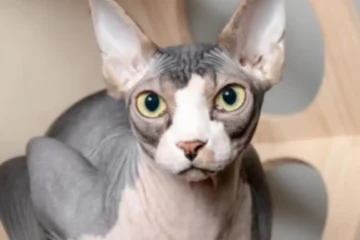Breeding cats is an intricate process, especially when it involves mixing two breeds with vastly different physical traits. In this article, we will delve into the fascinating world of feline genetics by exploring what happens when a hairless cat, like the Sphynx, breeds with a cat with hair. This crossbreeding raises numerous questions and possibilities, particularly about the physical appearance, health, and temperament of the offspring.
Understanding Feline Genetics
Before we dive into the specifics of breeding a hairless cat with a cat with hair, it’s essential to have a basic understanding of feline genetics. Genes determine every physical trait in a cat, from fur color and pattern to body shape and, of course, the presence or absence of hair.
The Role of the Hairless Gene
In hairless cats, the absence of fur is caused by a recessive gene. For a cat to be hairless, it must inherit two copies of this gene—one from each parent. On the other hand, a cat with hair typically carries the dominant gene responsible for fur. When these two types of cats breed, the genetic outcome depends on which genes the offspring inherit.
Possible Outcomes of the Crossbreeding
When a hairless cat breeds with a cat with hair, there are a few potential outcomes for their kittens:
- Hairless Kittens: If both parents carry the hairless gene (even if the cat with hair is a carrier but not hairless itself), some of the kittens might be born hairless.
- Kittens with Hair: If the hairless gene is not passed on, the kittens will be born with hair. However, these kittens could still carry the hairless gene and pass it on to future generations.
- Partially Hairless Kittens: In some cases, kittens might be born with sparse or patchy fur, a condition that could occur if they inherit a mix of the hairless and furred genes.

Appearance and Physical Traits of Offspring
The physical appearance of the offspring from a hairless cat and a cat with hair can vary widely. If a kitten inherits the hairless gene from both parents, it will be hairless like its hairless parent. However, if it only inherits the hairless gene from one parent and the fur gene from the other, it may have a unique appearance, such as:
- Sparse Fur: Some kittens may have thin, patchy fur that covers parts of their body while other areas remain hairless.
- Soft, Downy Fur: Kittens might have a soft, downy coat that is much thinner than typical fur, giving them a semi-hairless appearance.
- Full Coat: If the dominant fur gene is inherited, the kitten may have a full, normal coat of fur, despite being the offspring of a hairless cat.
Health Considerations in Mixed Breed Kittens
When breeding a hairless cat with a cat with hair, it’s important to consider the health implications for the kittens. The combination of different genetic backgrounds can lead to unique health challenges or benefits.
Skin Sensitivity
Hairless cats are known for their sensitive skin, which can be prone to irritation, sunburn, and other skin conditions. If a kitten inherits the hairless gene, it may also inherit these skin sensitivities, requiring special care to protect its delicate skin.
Allergies
While no cat breed is entirely hypoallergenic, hairless cats are often considered a better option for people with cat allergies. However, kittens from this crossbreeding may or may not be suitable for allergy sufferers, depending on the amount of fur they inherit.
General Health and Lifespan
Mixed breed cats often benefit from a more diverse gene pool, which can lead to better overall health and a longer lifespan. However, it’s crucial to monitor for any breed-specific health issues that could arise from either parent.

Temperament and Behavior of Offspring
The temperament of a kitten from this crossbreeding will likely be a blend of its parents’ personalities. Hairless cats, such as the Sphynx, are known for being affectionate, social, and playful. Cats with fur can vary widely in temperament depending on their breed, but many are also known for being loving and independent.
Kittens from this mix may inherit:
- Affectionate Nature: A strong desire for human companionship and attention.
- Playfulness: A high energy level and love for interactive play.
- Curiosity: An inquisitive nature that leads them to explore their environment.
Socialization
Like all kittens, those from this crossbreeding will benefit from early socialization to ensure they grow up to be well-adjusted, confident adults. Exposure to different people, environments, and other pets from a young age will help them develop a friendly and balanced temperament.

Caring for Mixed Breed Kittens
Whether a kitten from this crossbreeding has hair or not, they will require specific care to ensure they stay healthy and happy.
Skin Care for Hairless and Partially Hairless Kittens
If the kitten inherits the hairless gene, it will need regular skin care. This includes:
- Bathing: Regular baths to remove oils and dirt that can build up on their skin.
- Sun Protection: Keeping the kitten indoors or providing protection from direct sunlight to prevent sunburn.
Grooming for Kittens with Hair
Kittens that inherit a full coat of fur will require typical grooming, including:
- Brushing: Regular brushing to prevent matting and remove loose fur.
- Bathing: Occasional baths to keep their coat clean and healthy.
Diet and Nutrition
All kittens, regardless of their coat type, need a balanced diet rich in essential nutrients to support their growth and development. High-quality kitten food that provides the right balance of protein, fats, and vitamins is crucial for their health.
Frequently Asked Questions
Do hairless kittens require special care?
Yes, hairless kittens need regular skin care, including baths and protection from the sun.
Can a cat with hair carry the hairless gene?
Yes, a cat with hair can be a carrier of the hairless gene without being hairless itself.
Are hairless cats hypoallergenic?
While no cat is entirely hypoallergenic, hairless cats are often better tolerated by people with cat allergies.
What is the temperament of kittens from this crossbreeding?
These kittens may inherit a mix of traits, often being affectionate, playful, and curious.
Conclusion
Breeding a hairless cat with a cat with hair results in diverse, fascinating kittens with unique appearances and temperaments. Understanding the genetics and care needs of these crossbred kittens is crucial for ensuring their health and happiness. Whether you’re considering such a pairing or simply curious about the outcomes, this knowledge can help you make informed decisions.




